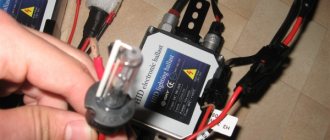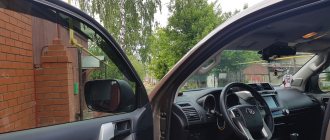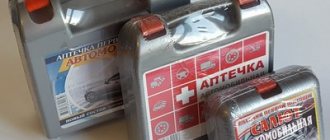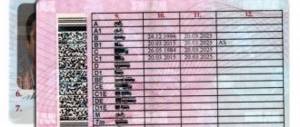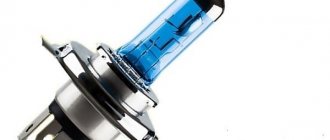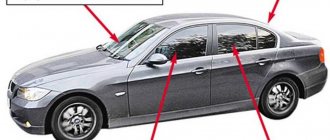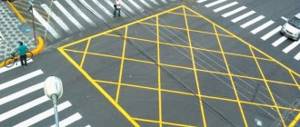Many car owners equip their vehicles with xenon headlights without even realizing that they are breaking the law. In addition, recently publications began to appear in online publications reporting that the installation of xenon in 2021 was allowed by the Supreme Court. Let's dispel any misconceptions right away. Xenon headlights are prohibited, with a few exceptions. Bloggers misinterpreted the Supreme Court ruling. The Supreme Court only noted that the punishment for xenon does not correspond to the nature of the offense, and more lenient penalties may be applied to motorists.
To eliminate misunderstandings, we will consider the responsibility for installing xenon headlights in more detail.
Is it possible to install xenon in 2021
The misunderstanding of this point is due to the fact that the law does not contain a clearly formulated statement banning xenon.
Therefore, when punishing drivers for xenon, traffic rules inspectors and courts operate on the fact that traffic rules oblige drivers to install lighting devices that correspond to the design of the car. In addition, punishment is provided for driving a car in the front of which there are lighting devices installed that create a red light or their operation and light output do not meet the established requirements. Despite the vagueness of the wording, xenon headlights fall under the definitions listed above, therefore, you cannot install them yourself.
To better understand the chain of application of punishment, we can give the following chain:
- Inconsistency of lighting devices with the vehicle design.
- Non-compliance of lighting sources with technical regulations.
In addition to the second point, we give the following classification of lighting sources:
- Halogen lamps - H.
- Xenon - D.
- LED - LED.
The permissibility of installing a particular lamp is indicated in the headlight marking. For example, if the manufacturer specified the HCR marking, this means that the low and high beam headlights are designed for halogen lamps only. If a car owner installs a xenon bulb, this constitutes an administrative offense.
Amendments to the Code of Administrative Offenses
Since 2012, traffic police inspectors began to pay attention to what light source in the headlights of moving vehicles illuminates the roadway for car owners.
Types of lamps.
This behavior of law enforcement officers is due to the introduction of some changes to the Code of Administrative Offences.
In particular, Articles 12.4 and 12.5 of the Code of Administrative Offenses began to indicate that only those lighting sources should be installed in cars that comply with the “Basic Rules for the Operation and Approval of a Vehicle” and also do not contradict the requirements of GOST.
These changes also affected xenon lamps. The Code of Administrative Offenses provides for the installation of xenon only if the vehicle manufacturer does not prohibit it.
As for penalties, for self-installation of xenon in fog lights, a car owner will have to pay at least 2.5 thousand rubles to the state budget and say goodbye to the lighting device.
There are also frequent cases when, for repeated violation of Articles 12.4 and 12.5 of the Code of Administrative Offenses, the driver was simply deprived of his license for a period of 30 to 90 days with the confiscation of the light device, of course.
For retrofitting a vehicle that is on the company’s balance sheet with xenon lamps, the amount of penalties increases - 15-20 thousand rubles. And if we are talking about an individual entrepreneur, then the administrative penalty reaches half a million rubles.
Why is xenon banned?
The concept of xenon lamps hides gas-discharge lamps with a bright luminous flux. Thanks to this solution, the headlight provides high-quality illumination of the road surface and increases road safety in extreme conditions. In addition, such headlights are durable, and on average can last about 3-5 years.
However, in this barrel of honey there is also a fly in the ointment, which became the reason for the ban on xenon lamps. There are two negative points here:
- Blinding drivers of oncoming cars;
- Poor visibility of the road due to strong dispersion of the light flux.
Brightness level of different headlights
Note that the listed nuances are relevant for handicraft installed lamps. If xenon is installed at the manufacturer, gas-discharge lamps have no disadvantages.
Is it worth using?
Each driver must answer the question of whether to install xenon or not, taking into account all the pros and cons of gas-discharge lamps. If we briefly systematize all the features of these lighting devices, we get the following picture:
| Advantages | Flaws |
| Luminous flux power (about 2-3 times stronger than halogen lamps) | Luminous flux power. In some situations, increased brightness may be excessive and may blind oncoming drivers. Correct installation and adjustment of headlights in theory eliminates this problem, but in practice this does not always help. |
| Variety of light spectrum (you can choose the color that will cause the least amount of eye fatigue for the driver) | Price (equipment from trusted companies is not cheap, and, in addition, if one of the lamps fails, it is recommended to change both due to the strong contrast in the color difference) |
| Durability (service life is on average 3-5 times longer than halogen lamps) | |
| Low energy consumption |
Which lamps shine better?
This question worries many car owners. In fact, xenon lamps are actually better: they produce brighter light. However, the quality of road lighting depends not only on the light source, but also on the design of the headlight. Factory elements intended for the installation of gas-discharge lamps are equipped with filters, reflectors and washers. Only such completeness provides advantages when installing xenon.
Comparison of xenon and halogen headlights
In auto repair shops that install xenon lamps in halogen headlights, they don’t bother with such subtleties, so the effect is the opposite. Xenon blinds drivers and impairs visibility on the road. That is why bans on the use of such lighting devices were introduced.
Is it allowed to install xenon
A number of drivers choose xenon lamps for their bright light. It is believed that they better illuminate the road and reduce the number of accidents. The statement is only partly true. Such headlights, indeed, can shine much brighter, but the road is not visible better. In this case, the use of xenon leads to the following problems :
- Blinding . The phenomenon occurs because the reflectors direct the light higher, rather than onto the road. The risk of an accident increases exponentially.
- The road lighting is not correct . Experts have proven that xenon does not illuminate the path well enough. The light appears bright, but, due to the nature of the lamps, it spreads over a shorter distance.
- Visibility deteriorates . Bright xenon lamps create dark shadows on the road. They can be mistaken for a hole or other obstacle. By turning sharply to the side to avoid it, the driver creates a danger for other road users.
Some cars have factory-installed xenon headlights . Typically, lamps are installed in lighting fixtures used during fog. The traffic police officers have no complaints about them . Other types of xenon are prohibited. You can find out the type of lighting fixture by examining it. The designation for halogen lamps begins with H, and for xenon lamps with D.
Penalties
Interestingly, the penalties applied for installing xenon headlights vary greatly. The minimum punishment that a violator can expect is a fine of 500 rubles. This is possible in cases where the offense is classified under Part 1 of Art.
12.5 of the Code of Administrative Offenses, which provides for punishment for driving a vehicle with technical defects that prohibit operation. However, you can count on such luck only if you have a good lawyer, and even then, not always. Read also: Law on the consumer basket
In most cases, car owners are fined under Art. 12.4 part 1, which provides for punishment for installing lighting devices with inappropriate operating mode or color of lights in the front part of the car. In accordance with this document, drivers face a fine in the amount of:
- Civilians - 3,000 rubles.
- For officials - 15,000-20,000 rubles.
- Legal - 400,000-500,000 rubles.
In addition, the legislator provides for the confiscation of devices that caused an offense.
On a note! If the car owner only recently purchased a car and did not know about the installed xenon or did not have time to eliminate the violation, this does not relieve him of responsibility.
Article 12.5 of the Code of the Russian Federation on Administrative Offenses “Driving a vehicle in the presence of malfunctions or conditions under which the operation of vehicles is prohibited, or a vehicle on which the identification mark “Disabled” is illegally installed”
Article 12.4 of the Code of Administrative Offenses of the Russian Federation “Violation of the rules for installing devices on a vehicle for sending special light or sound signals, or illegal application of special color schemes of emergency service vehicles, color scheme of a passenger taxi, or illegal installation of an identification lamp of a passenger taxi or an identification sign “Disabled”
Is it possible to solve the problem legally?
On the domestic market there is a large number of LED and xenon lamps designed for installation in the front optics of cars. Almost all of them have certificates of conformity obtained by their manufacturer. This fact pushes motorists to purchase such newfangled and stylish lighting devices: since the seller presented a certificate, it means that the use of such lamps is allowed. However, this is not entirely true - even the presence of an official certificate does not mean that these lamps can be installed in the headlights of any car.
All headlights used on modern cars are divided into several categories based on their type of design. Each of them is adapted to install a certain type of lamp, which can be recognized by the markings applied. According to the international rules established by the regulations of the Economic Commission of the United Nations, automakers can install three types of lamps on their products:
- Standard incandescent lamps.
- Halogen lighting elements.
- Gas discharge lamps.
Headlights adapted for the installation of conventional incandescent lamps are marked only with the Latin letters C, R, CR: operating in low, high or combined mode. Halogen headlights have an additional designation “H”, and gas discharge headlights have an additional designation “D”. Installation of xenon lamps, according to technical regulations, is allowed only on cars whose headlights are marked “D”. Such lighting devices are specially designed for xenon lamps, have the appropriate certification, and do not interfere with other road users. If a xenon gas-discharge lamp fails, you can independently install a new one to replace the burnt-out one.
The situation is more complicated with LEDs, since they are a separate class of lighting devices. Officially, they do not belong to halogen, gas-discharge, or classic incandescent lamps. Therefore, their installation is in no way regulated by operational and technical regulations and approvals. If we proceed from the postulate “everything that is not prohibited is permitted,” then theoretically it is possible to install LEDs on any type of headlights.
In fact, such a gap gives rise to many discrepancies. In some cases, traffic police inspectors do not pay attention to the installed LEDs. Other employees classify them as halogen lamps, believing that they can only be installed in headlights marked “H”. It also happens that LED lamps are regarded as unauthorized changes to the design of the car, regardless of what type of headlights they are installed in.
In the latter case, the car owner faces punishment in accordance with Art. No. 12-5 of the Code of Administrative Offenses, which provides for deprivation of a license for up to a year. As a result, in order to prove the illegality of the punishment, the owner of the car will need to go to court, and it is not a fact that the judge will side with the plaintiff at the end of the proceedings. The only way to avoid such troubles is to install lamps designed for this type of headlights on your car.
Deprivation of rights for xenon headlights
This is perhaps the greatest injustice for violators. If the offense is classified under Part 3 of Art. 12.5: installation in the front of the car of lighting devices with a red luminous flux or operating in violation of established requirements.
In this case, the penalty is deprivation of rights for a period of 6-12 months. Lighting devices installed in violation are also subject to confiscation.
What to do if you are fined for xenon
The first thing to understand is that arguing with the inspector on the spot is useless. The decision on punishment is made by the court, the traffic police officer only records the fact of the offense and draws up a protocol on this matter.
Therefore, you need to keep your cool and do the following:
- Write down the number of the inspector's service ID, including the number of the badge.
- Ensure that the vehicle inspection is carried out in accordance with the established rules: video recording, the presence of two witnesses.
- Indicate in the protocol the fact of your disagreement with the claims put forward, indicating the reasons.
Here it is necessary to clarify that you should not refuse to sign the protocol. This does not provide any advantage in subsequent proceedings. It is better to immediately indicate your civic position. In our case, this is disagreement with the actions of the traffic police inspector.
Important! The fine for xenon can only be challenged in court. It is important to take into account that the judge will not personally inspect the car, but will be guided only by the data specified in the protocol. Therefore, initially you need to ensure that the document is filled out correctly and correctly.
Compliance with the legality of the inspection procedure plays an important role. For example, it is possible to determine that xenon lamps are installed in the headlights only at a specially equipped traffic police post. If the car was simply inspected on the road, this will be a significant argument in favor of the driver. The main thing is to note this nuance in the protocol being drawn up.
Read also: What happens if you don’t pay the loan at all
In addition, many courts note a violation of the operating mode of the headlight when replacing a halogen or gas-discharge lamp. It is this wording that is indicated in Article 12.5 of the Code of Administrative Offences. However, there is a legal issue here. In particular, the operating mode of an external light device is divided into two types: flashing and constant. Halogen, xenon and LED lamps belong to the classification of lighting devices, and their interchangeability does not affect the operating mode of the device. For example, if a driver installs a gas discharge lamp instead of a halogen lamp, the headlight will not operate in flashing beacon mode, but will continue to shine with constant light.
It follows that the use of xenon is not an offense under Article 12.5 of the Administrative Code, Part 3, because the operating mode of the headlight and the color of the luminous flux have not changed. Knowing these subtleties, you can avoid deprivation of your driver's license.
Explanations from the traffic police about xenon
In connection with numerous requests from citizens regarding the use of headlights on vehicles with gas-discharge light sources (“xenon lamps”), the Traffic Safety Department of the Ministry of Internal Affairs of Russia explains the following.
Currently, the following officially approved types of headlights are installed on vehicles:
C – low beam, R – high beam, CR – dual-mode (low and high beam) light with incandescent lamps (UNECE Rules No. 112, GOST R 41.112-2005);
HC – low beam, HR – high beam, HСR – dual-mode light with halogen incandescent lamps (UNECE Rules No. 112, GOST R 41.112-2005);
DC - low beam, DR - high beam, DСR - dual-mode light with gas-discharge light sources (UNECE Rules No. 98, GOST R 41.98-99). An appropriate marking indicating the type of headlamp (exterior light fixture) and the approval mark (consisting of a circle containing the letter “E” followed by the number of the country which has granted approval and the approval number) is affixed to the headlamp lens and on the headlamp housing, if the lens can be separated from it.
The category designation for halogen incandescent lamps, shown on their base or bulb, begins with the letter “H”.
Gas-discharge light sources, the category marking of which, indicated on the base, begins with the letter “D”, in accordance with the requirements of UNECE Regulation No. 99 and GOST R 41.99-99 “Uniform provisions concerning the official approval of gas-discharge light sources for use in officially approved gas-discharge optical elements of motor vehicles" are intended for use only in headlights of DC, DR, DCR types.
In accordance with the explanations of the Federal State Unitary Enterprise "Research and Experimental Institute of Automotive Electronics and Electrical Equipment" (NIIAE), the use of light sources in external lighting devices that do not correspond to the type of the given lighting device violates the conditions for ensuring road safety due to a number of physical factors (dimensions of the spark discharge, wavelength, scattering angle of reflected radiation) and technical (class of reflective surface of the reflector, presence on the vehicle of an automatic light beam corrector and headlight washer) factors.
Thus, the use of gas-discharge light sources in headlights intended for use with incandescent lamps, including halogen ones, should be qualified as a discrepancy in the operating mode of external lighting devices (a set of technical characteristics of headlights corresponding to a particular light distribution that ensures road safety depending on road situation and weather conditions) to the requirements of the vehicle design.
Based on this, driving a vehicle with headlights intended for use with incandescent lamps in which gas-discharge light sources are installed must be qualified by employees of the State Traffic Inspectorate as an administrative offense provided for in Part 3 of Article 12.5 of the Code of Administrative Offenses of the Russian Federation (the operating mode of lighting devices does not comply with the requirements of the Basic Provisions for admission of vehicles to operation and duties of officials to ensure road safety). The operation of vehicles is prohibited in the manner prescribed by parts 2, 21, 4 of Article 27.13 of the Code of Administrative Offenses of the Russian Federation (with the removal of state registration plates).
If facts of installation of lighting devices are revealed, the operating mode of which does not comply with the requirements of the Basic Provisions, a case of administrative offense is initiated under Part 1 of Article 12.4 of the Code of Administrative Offenses of the Russian Federation.
Considering the impossibility of confiscating in a number of cases devices (light sources) that were instruments of an administrative offense (dark hours, sections of roads outside populated areas), in the manner prescribed by Article 27.14 of the Code of Administrative Offenses of the Russian Federation, measures must be taken to seize these things.
Consideration of cases of administrative offenses provided for in Part 3 of Article 12.5 of the Code of Administrative Offenses of the Russian Federation is within the competence of the courts. Responsibility for this offense is provided in the form of deprivation of the right to drive vehicles for a period of six months to one year with confiscation of the corresponding lighting devices.
On the issue of using xenon headlights
In connection with numerous questions from citizens and media representatives regarding the clarification on the use of “xenon” headlights published on February 20, 2010, we further clarify the following:
1. First of all, it is necessary to reassure all owners of legal xenon - there are no complaints against you and cannot be, because The headlights of your cars are certified for use with gas-discharge light sources.
2. It should be clarified that we are only talking about bringing to justice drivers of those cars that have gas-discharge light sources (“xenon” lamps) installed in headlights intended for use with incandescent lamps (including halogen). These headlights are not designed for this type of light source and, accordingly, their light is distributed in such a way that it blinds other road users.
3. Many questions arise about whether the relevant explanations have been communicated to the State Traffic Inspectorate employees. These clarifications were sent to the chief state road safety inspectors for the constituent entities of the Russian Federation by order of the Traffic Safety Department of the Ministry of Internal Affairs of Russia dated February 25, 2010 No. 13/5-427 for bringing them to the attention of the State Traffic Inspectorate personnel and informing the population through the media.
4. It is also necessary to clarify that control over the compliance of external lighting devices with established requirements, in accordance with the above instructions, will be carried out by state technical supervision inspectors both during state technical inspection and when they check the technical condition of vehicles during traffic supervision .
5. Many questions arise about the correct classification of this offense under Part 3 of Article 12.5 of the Code of Administrative Offenses of the Russian Federation. It should be noted that, in addition to the letter from the Federal State Unitary Enterprise “Research and Experimental Institute of Automotive Electronics and Electrical Equipment” (NIIAE), there is judicial practice on this issue that confirms the correctness of the specified qualification. In particular, this issue was considered by the Supreme Court of the Russian Federation (resolution in case No. 11-AF09-1246 of December 15, 2009) as part of a supervisory appeal against the decision in the case of an administrative offense of a citizen who drove a vehicle with gas-discharge light sources installed in CR (HCR) type headlights, which also confirmed the correct classification of the specified offense under Part 3 of Article 12.5 of the Code of Administrative Offenses of the Russian Federation.
Department of Traffic Safety of the Ministry of Internal Affairs of Russia
What happens if you don't pay the fine on time?
Here you need to remember two important nuances.
- Firstly, it is better to pay the fine within 20 days from the date of the relevant decision. This will help you save and get a 50% discount. This practice has been in effect in Russia for a long time, and encourages drivers to pay the fines imposed on them on time.
- Secondly, the fine must be paid within 60 days, this period also includes the time limit for appealing the decision.
If this requirement is not met, penalties will be tightened. To begin with, the size of the fine increases, and you will have to pay it double. If this measure does not work, the culprit may face:
- Administrative arrest for up to 15 days.
- Up to 50 hours of mandatory work.
The application of such sanctions does not relieve the need to repay existing debt. In addition, the law provides for forced collection, including at the expense of property owned by the debtor. An additional reason to pay fines on time is the fact that such debtors are not allowed to go abroad, which can ruin a long-planned vacation.
